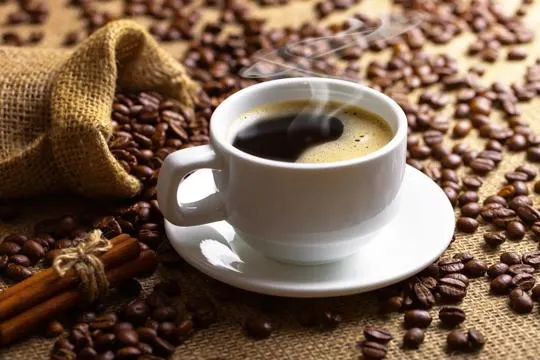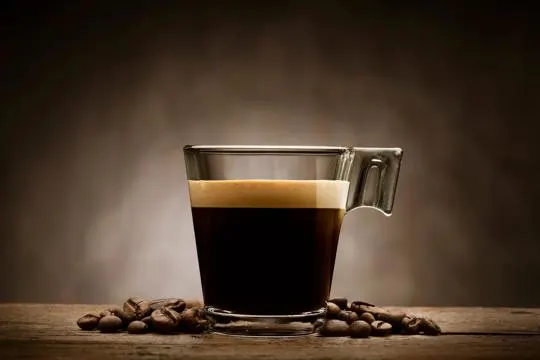Summary of key points
The main difference between half-caff and decaf coffee lies in their caffeine content. Half-caff contains approximately half the amount of caffeine as a regular cup of coffee, while decaf has had most or all of its caffeine removed.
In terms of taste, both options offer a less intense and slightly different flavor compared to regular coffee. This is due to the roasting process used to remove caffeine which can alter the flavor profile.
For those looking to reduce their caffeine intake, half-caff is a great option as it still provides some energy without the jitters. However, decaf may be necessary for those who are sensitive to caffeine or trying to avoid it altogether. Both offer a tasty alternative for coffee lovers.
Ever sipped a cup of half caff and wondered how it stacks up against decaf?
We’ve been there.
Half caff means you’re playing the caffeine game on medium mode. Decaf? That’s easy level.
Coffee’s a big deal for us. We’ve debated its merits over many breakfast tables.
Half caff gives that slight buzz. Decaf keeps things calm.
What’s the verdict in our caffeine saga? Stay tuned.
What is Half Caff Coffee?

Half Caff coffee is unlike any other. It’s got the perfect mix of caffeinated and decaffeinated beans.
That means it has half the caffeine of regular coffee, while still giving you that same rich flavor.
Creating Half Caff involves mixing equal parts of regular and decaffeinated beans.
So you can still get your coffee fix, without the intense caffeine buzz.
But, keep in mind: this isn’t a caffeine-free cup.
It just has lower levels than regular coffee.
When you buy Half Caff, check the packaging for the exact caffeine content.
Some brands list precise measurements, but others offer approximations.
If you’re sensitive to caffeine, or monitoring your intake, it’s best to know exactly how much is in each cup.
What is Decaf Coffee?

Decaf coffee has had most or all of its caffeine taken out.
This is done through solvents or the Swiss water method.
The flavor and aroma of regular coffee remain, but with much less caffeine.
Decaf coffee is now more popular as people seek alternatives but still want a tasty drink.
- Caffeine levels in decaf coffee can differ. It may not be as strong as regular coffee, but still has some caffeine. People with high sensitivity or those who need to avoid it completely should be careful.
- The taste of decaf coffee is different to regular coffee. It may be milder or not as rich. However, modern techniques have improved the taste of decaf coffee, making it enjoyable for those looking for less caffeine.
Differences Between Half Caff and Decaf

Decaf and half caff are two popular choices for coffee-lovers who like a lighter caffeine experience.
They may seem similar, but there are differences.
Caffeine Content
Half caff is a great selection for those seeking a milder caffeine boost.
It has 50% less caffeine than regular coffee.
Decaf, on the other hand, goes through a process which eliminates almost all of the caffeine.
This makes it a good choice for people who are sensitive to caffeine or wish to reduce their intake.
Before deciding, think about what your personal tolerance and preferences are.
Coffee Bean Blend
Coffee bean blends are unique combinations of different types of beans.
Roasters craft signature blends by combining the best qualities of various beans.
Many options exist for crafting a blend.
Roasters can experiment with ratios of beans from different countries or regions.
A blend may include beans from diverse places, or it may focus on a single origin.
The choice of blend greatly affects the taste.
Blends that include beans from multiple regions offer complexity and depth.
Single origin blends offer a more focused flavor profile.
In addition to flavor, coffee bean blends also consider acidity, body, and aroma.
Roasters expertly balance these elements to create a cup that appeals to the senses.
Roast level and grind size can be adjusted to achieve the desired results.
Flavor and Taste
Flavor and taste are key when comparing half caff and decaf coffee.
Half caff has a mix of regular and decaf beans, making it more mild.
Decaf coffee has most of its caffeine removed, which may lead to a less bold taste.
Remember, flavor preferences differ from person to person.
So, it is up to you to decide which one suits your taste buds best.
Effects on Energy Levels
Half-caff and decaf can both have different effects on energy levels.
Half-caff is a mix of regular coffee and decaf.
It has less caffeine than normal coffee, yet still gives you a bit of a kick.
Decaf, however, has almost no caffeine.
It won’t give you an instant energy boost, but it can be great for those who don’t like caffeine’s effects.
Individuals may still feel energized when drinking both half-caff and decaf.
So, it comes down to personal preference and your sensitivity to caffeine.
Both options give you a chance to enjoy coffee without the jitters or sleeplessness that too much caffeine can cause.
Similarities Between Half Caff and Decaf

Half Caff and Decaf might look the same, but there are big differences.
Both give less caffeine than regular coffee. But, Decaf has most of the caffeine taken away.
Half Caff is made from a mix of regular and decaf beans. This makes it milder and less potent.
The amount of caffeine in Half Caff varies, depending on brand and blend.
So, if you want less caffeine but still enjoy coffee, Half Caff could be ideal for you.
In conclusion, Decaf gets rid of nearly all caffeine.
Half Caff has a mix of regular and decaf, giving you less caffeine than regular but not none.
Who Should Choose Half Caff or Decaf?
Half caff and decaf coffee can be great options for different reasons.
Half caff is perfect for those trying to reduce their caffeine intake yet still appreciate the flavor of regular coffee.
Decaf is ideal for individuals who cannot tolerate caffeine due to medical or personal reasons.
Half caff is ideal for those seeking to lessen their caffeine intake.
It has only half the caffeine content of regular coffee, producing a milder and less stimulating effect.
It can be especially beneficial for those who find too much caffeine makes them jittery and anxious.
Additionally, pregnant women and nursing mothers can enjoy a cup of half caff while limiting their caffeine intake.
Decaf coffee contains no caffeine at all.
It is perfect for those who are highly sensitive to caffeine or have health conditions that require them to avoid it.
Decaf goes through a process where the caffeine is removed, leaving behind a mild and flavorful brew.
People with acid reflux, heart problems, or anxiety disorders can now enjoy a warm cup of coffee without any negative effects.
In short, your choice between half caff and decaf depends on your individual preferences and needs.
If you want to reduce your caffeine intake but still enjoy the taste of regular coffee, then half caff is the way to go.
Or if you cannot tolerate caffeine for medical reasons, decaf is your perfect alternative.
Both provide delicious options for those looking for less stimulating alternatives while still getting to experience the joy of sipping on a hot beverage.
Brewing and Serving Half Caff and Decaf Coffee
Making half caff and decaf coffee requires different techniques to get the desired flavor and caffeine levels.
Knowing the differences is key for a good cup of joe.
Start by pouring hot water over freshly ground beans. Then, adjust the brewing time to maximize flavor.
For half caff, use a mix of regular and decaf beans to create a balanced taste with less caffeine.
Decaf coffee means removing most of the caffeine from the beans.
Use a precise brewing temperature of 195-205°F to get the best taste for both varieties.
Serving them is also different. Half caff can be enjoyed black or with milk and sugar.
Dairy or sweeteners can help enhance flavors and make the drink smoother.
Decaf is usually seen as more delicate and should be sipped black to fully enjoy its subtle nuances.
It’s interesting that half caff blends have become popular for those that want some caffeine but not too much.
This lets people experience all the flavors without drinking too many stimulants.
Also, decaf coffee has improved in taste over time.
Roasters use techniques like Swiss water processing and carbon dioxide extraction to keep more of the coffee flavors during decaffeination.
Conclusion
The main difference between Half Caff and Decaf is the amount of caffeine.
Half Caff has half the caffeine of regular coffee, whilst Decaf has almost no caffeine.
This is great for people who want to reduce their caffeine intake but still enjoy the flavor of coffee.
It is essential to note that both Half Caff and Decaf can provide a nice taste without the stimulating effects of regular coffee.
Also, the process used to remove caffeine differs.
Half Caff coffee beans go through a decaffeination process, while Decaf has an additional decaffeination process to reach its minimal or zero caffeine levels.

Leave a comment